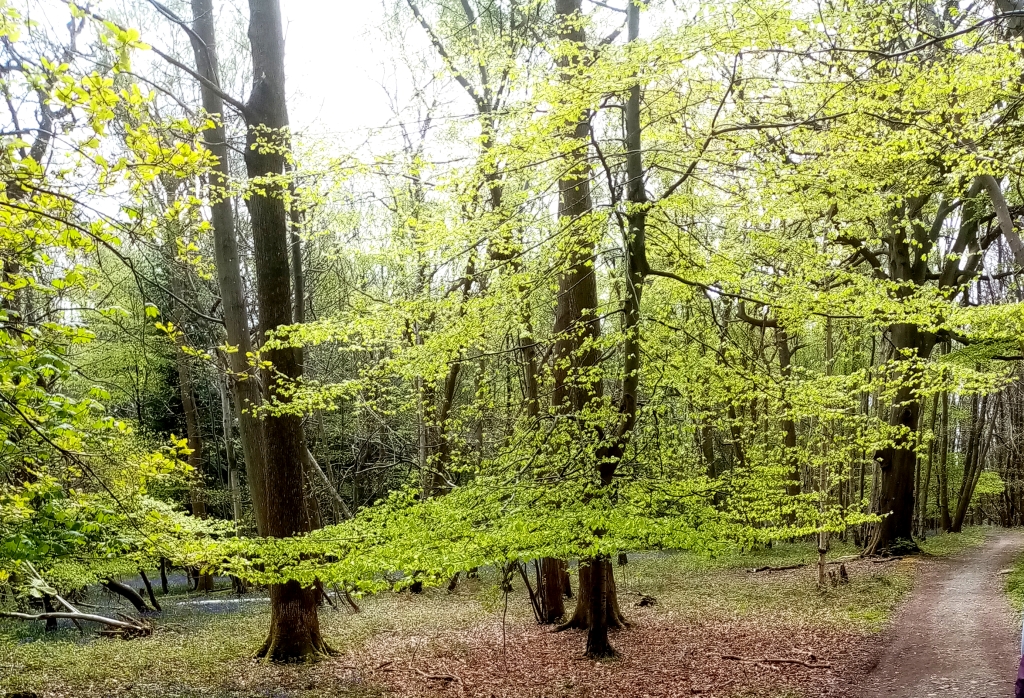
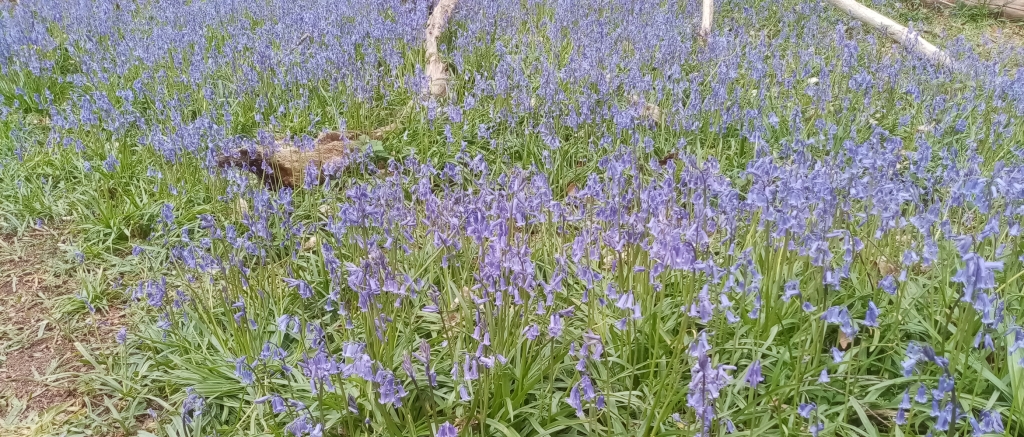
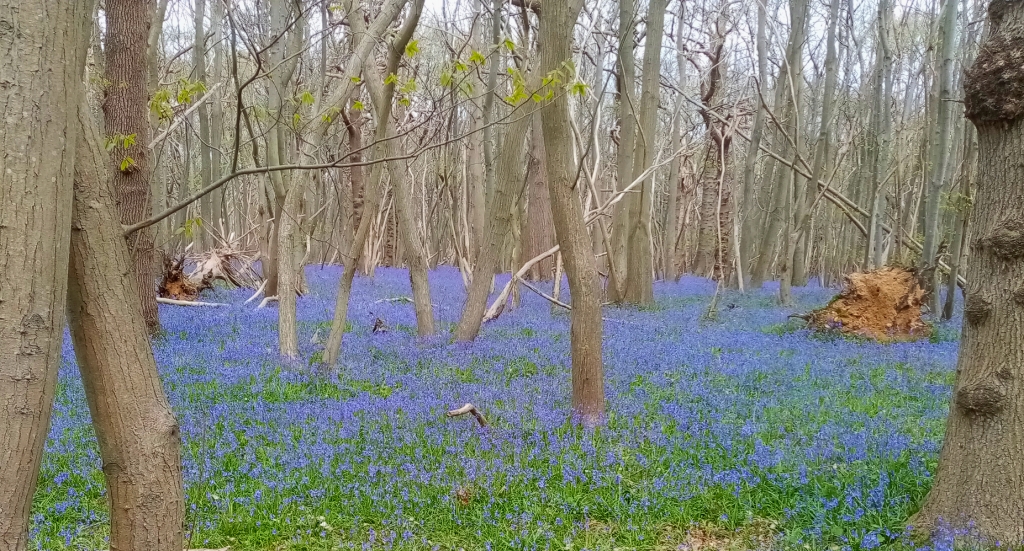
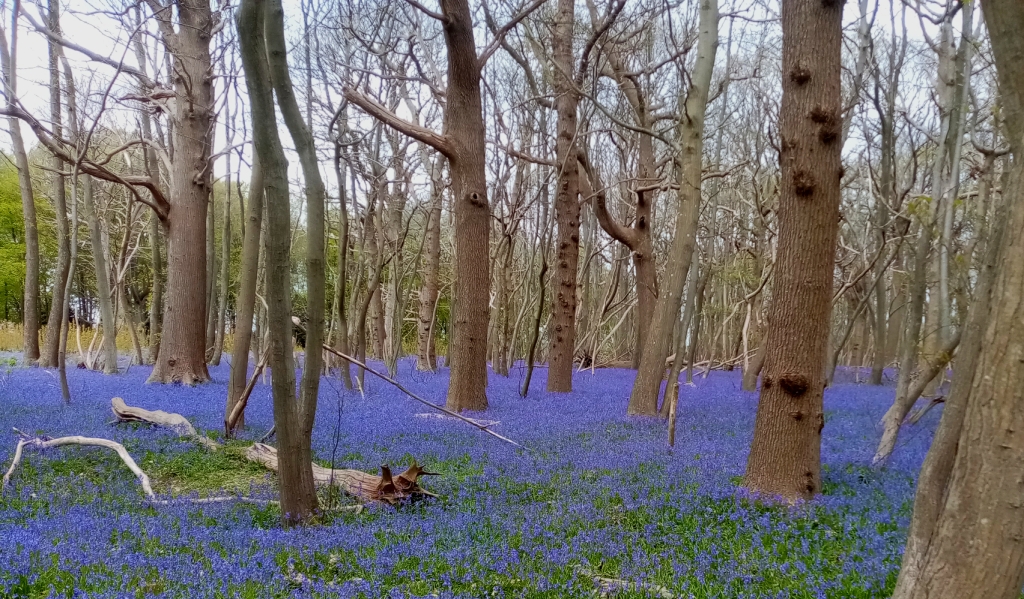
Our Sunday walk took us through King’s Wood near Chilham. A graceful beech sapling, and bluebells, the more fragrant after a night’s rain.


Yesterday Abel was coming away from the L’Arche Glebe garden when his eye was arrested by the round, tan-coloured husks beneath the hollow yew outside Saint Mildred’s church. They must really be discarded cones, since the yew is a conifer – with no recognisable cone.
I was half reminded of something. Then today Mrs T and I went to see the cowslips near Brogdale, happily growing on the chalk. Another chalk-lover is the beech tree, one I loved to climb as a boy, and a mile or so on from the cowslip field our walk took us through a beech wood. Unlike this picture from last year, it was a grey day, the path was wet, but we could still appreciate Edward Thomas’s observation in The South Country.
Then in the early morning the air is still and warm, but so moist that there is a soul of coolness in the heat, and never before were the leaves of the sorrel and wood sanicle and woodruff, and the grey-green foliage and pallid yellow flowers of the large celandine, so fair. The sudden wren’s song is shrewd and sweet and banishes heaviness. The huge chestnut tree is flowering and full of bees. The parsley towers delicately in bloom. The beech boughs are encased in gliding crystal. The nettles, the millions of nettles in a bed, begin to smell of summer. In the calm and sweet air the turtle-doves murmur and the blackbirds sing — as if time were no more — over the mere.
The roads, nearly dry again, are now at their best, cool and yet luminous, and at their edges coloured rosy or golden brown by the sheddings of the beeches, those gloves out of which the leaves have forced their way, pinched and crumpled by the confinement. At the bend of a broad road descending under beeches these parallel lines of ruddy chaff give to two or three days in the year a special and exquisite loveliness, if the weather be alternately wet and bright and the long white roads and virgin beeches are a temptation.
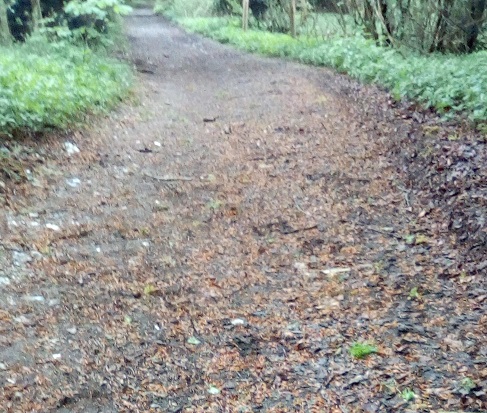
There is never enough traffic on this bridleway to order the husks into parallel lines, but there they are, colouring the path. The nettles are in evidence ahead; we would discern the white of cow parsley if we were closer, but the pale celandine was not yet in flower here. (The bright, low-growing, lesser celandine is all but finished.)

Close to, the russet husks are indeed cool and luminous. Who would have said that brown could shine?
Thank you Edward Thomas!
Riding due East into Aylesham my expectations were somewhat confounded. I had expected the gale to be on my back, but it was on my left shoulder, pushing me towards the middle of the road. There was noticeable relief when there was a hedge on the North side of the road, so it was encouraging to see new hawthorn slips bursting green from their rabbit-proof planting tubes. Relief for cyclists and protection for the land. The soil up here is quite thin over the chalk.
More relief when I branched off on the Southern road into the village. The Spinney shields most of this stretch, a woodland with beech, hazel and sweet chestnut. I stopped to sit on a branch and eat lunch. The bluebells are in fine leaf, as are wild arum and anemones, but what of wild garlic? I hadn’t long to search, I had an appointment in the village and I wasted time watching a brimstone butterfly, happy enough to be out of the wind, under the trees, enjoying the sunshine beaming through the bare branches. I found just one leaf, which I nobly left to grow. And I was happy too.
Let’s change that ‘I wasted time’ to ‘I spent time’, while I was watching the butterfly. Time well-spent!